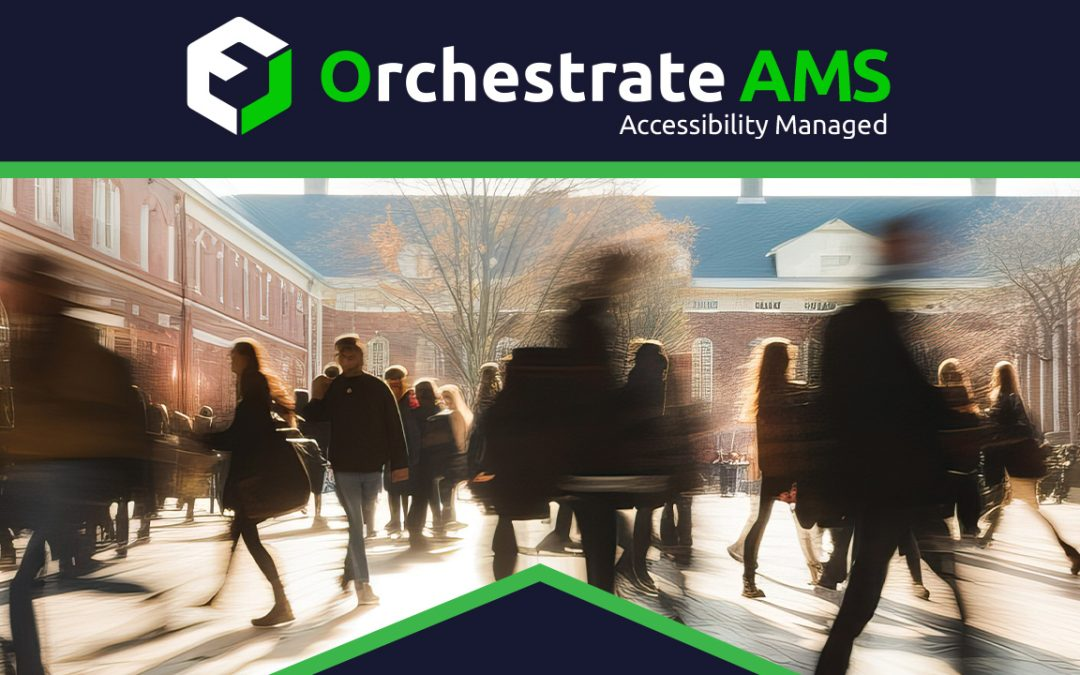Many educators face challenges in accommodating students with disabilities. Around 20.5% of undergraduates report having a disability, highlighting the need for adequate support. Clear plans and simple accommodations can remove barriers and give students equal chances to succeed. Section 504 accommodations help schools meet these needs while complying with the law.
What Are Section 504 Accommodations?
Section 504 accommodations are changes or supports that help students with disabilities. These adjustments remove barriers that can make learning harder due to physical, mental, or emotional needs. Accommodations may include extra time on tests, seating changes, or tools like speech-to-text software. With six-year graduation rates for students with disabilities 18.5% lower than their peers, it can help bridge the gap by improving accessibility.
How Eligibility for Section 504 Plans Work
To qualify for a Section 504 plan, a student must have a disability that affects major life activities like learning, walking, or communicating. A Section 504 team may include a 504 coordinator, school staff, parents, and potentially other specialists. They review information to decide if the student is eligible, which may include:
- Medical records
- Test scores
- Grades
- School-based data, such as attendance or behavior reports
- Teachers’ reports
The team looks at whether the student’s condition makes it harder for them to participate in school without extra help. Poor grades are not the only factor. Even students with good grades can qualify if their disability creates challenges that need accommodations. If the team decides the student is eligible, they work together to create a plan with the right support to help the student succeed in school.
Requesting Accommodations
To request Section 504 accommodations, parents submit a written request or medical accommodations form, often with supporting documents like a physician’s report or HIPAA authorization. The school evaluates the request using medical records, teacher input, and academic data. If approved, a 504 team meets to create the plan. If denied, families can pursue mediation or a due process hearing to resolve the issue.
The Role of a 504 Plan in Schools
A Section 504 plan lists the changes and supports a school provides to help students with disabilities. These can include classroom accommodations, changes to teaching methods, or learning environment adjustments. For example, a student with a serious injury might need an assistive mobility device or a reduced schedule. Or a student with autism spectrum disorder might benefit from a behavior plan or a quieter space to work.
The process starts with a doctor’s note or proof of a disability that affects major life activities like walking or learning. A Section 504 team, often comprised of parents, teachers, and school staff, works together to create the plan. Unlike an IEP, a 504 plan focuses on removing obstacles in regular classrooms.
What Accommodations Must Be Provided With a 504 Plan?
A 504 plan gives students with disabilities flexible support to help them succeed in school. These accommodations are designed to remove barriers and make learning accessible. Common examples include:
- Seating Arrangements: Students may need to sit away from distractions or get seating support for their assistive mobility device.
- Testing Adjustments: Some may take tests in a quieter room, have questions read aloud, or use tools like a calculator.
- Writing Support: Tools like speech-to-text software, typing instead of writing by hand, or visual organizers for assignments can be used.
- Extra Time: Students can get more time to finish tests, homework, or classroom activities.
- Accessible Textbooks: Textbooks may be offered in audiobooks or larger print formats.
- Instructional Help: Teachers can check in more often, break tasks into smaller steps, or use visual aids to explain key ideas.
- Breaks and Quiet Spaces: Frequent breaks or access to a quiet room can help students stay focused and manage stress.
These accommodations make learning more accessible and help students participate fully in their education. As a result, a 504 plan helps ensure every student has the chance to thrive regardless of their circumstances.
How 504 Accommodations Differ From an IEP
Section 504 accommodations and Individualized Education Programs (IEPs) both help students with disabilities but are designed for different needs. A 504 plan focuses on removing barriers in the classroom. An IEP, on the other hand, is part of special education under the IDEA law. It provides teaching and services for students with more significant needs, such as dyslexia or developmental delays.
The eligibility process is also different. A 504 plan is for students whose disabilities affect major life activities but don’t need special teaching. An IEP is for students who need changes to the curriculum and extra support. Both plans involve evaluations and include input from parents or guardians. IEPs, however, include more detailed assessments and offer protections like Free Appropriate Public Education (FAPE).
Legal Rights and Protections Provided by Section 504
Section 504 of the Rehabilitation Act of 1973 is a law that ensures students with disabilities are protected from discrimination and have equal access to education and school activities.
Key rights and protections include:
- Nondiscrimination: Schools must prevent discrimination and harassment based on a student’s physical or mental disability.
- Free Appropriate Public Education (FAPE): Students with disabilities are entitled to an education that meets their needs equally to their peers.
- Reasonable Accommodations: Schools must provide support like schedule changes, assistive devices, or classroom adjustments to help students succeed.
- Equal Opportunities: Students must have equal opportunities to participate in sports, clubs, and other school activities.
- Support Beyond IDEA: Section 504 covers students who don’t qualify for special education under IDEA but still need accommodations.
- Major Life Activities: The law protects students with disabilities affecting activities like walking, learning, or speaking.
- Section 504 Coordinator: Schools must have a coordinator to ensure compliance and address concerns from families or staff.
Together with the Americans with Disabilities Act (ADA), Section 504 helps create inclusive schools. These protections ensure students with disabilities get the support they need to thrive.
Ensuring Compliance With Section 504
Universities must follow Section 504 to give students with disabilities equal access to education. This means assigning a Section 504 coordinator to handle compliance, guide evaluations, and support the 504 team. Schools must provide Free Appropriate Public Education (FAPE) by meeting students’ needs and preventing discrimination. Regular reviews of 504 plans and clear steps for eligibility keep accommodations effective and fair.
Compliance is key for both legal and ethical reasons. Failing to meet standards can lead to complaints or investigations by the Office for Civil Rights. Universities can avoid these problems by training staff, addressing harassment, and explaining safeguards to families. Staying compliant builds trust and ensures all students get the support they need to succeed.
Orchestrate AMS: A Trusted Solution for 504 Accommodations
Praised by a prominent California university, Orchestrate AMS makes managing 504 accommodations easier for colleges and universities. It saves time by automating tasks like scheduling exams and organizing note-taking services. The platform is flexible and works with modern systems to keep data accurate and organized. By streamlining accommodation management, Orchestrate AMS helps create more inclusive and efficient campuses.

